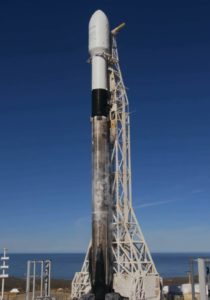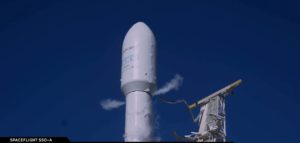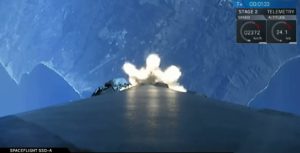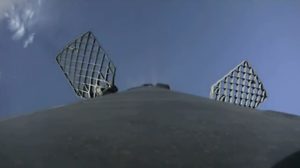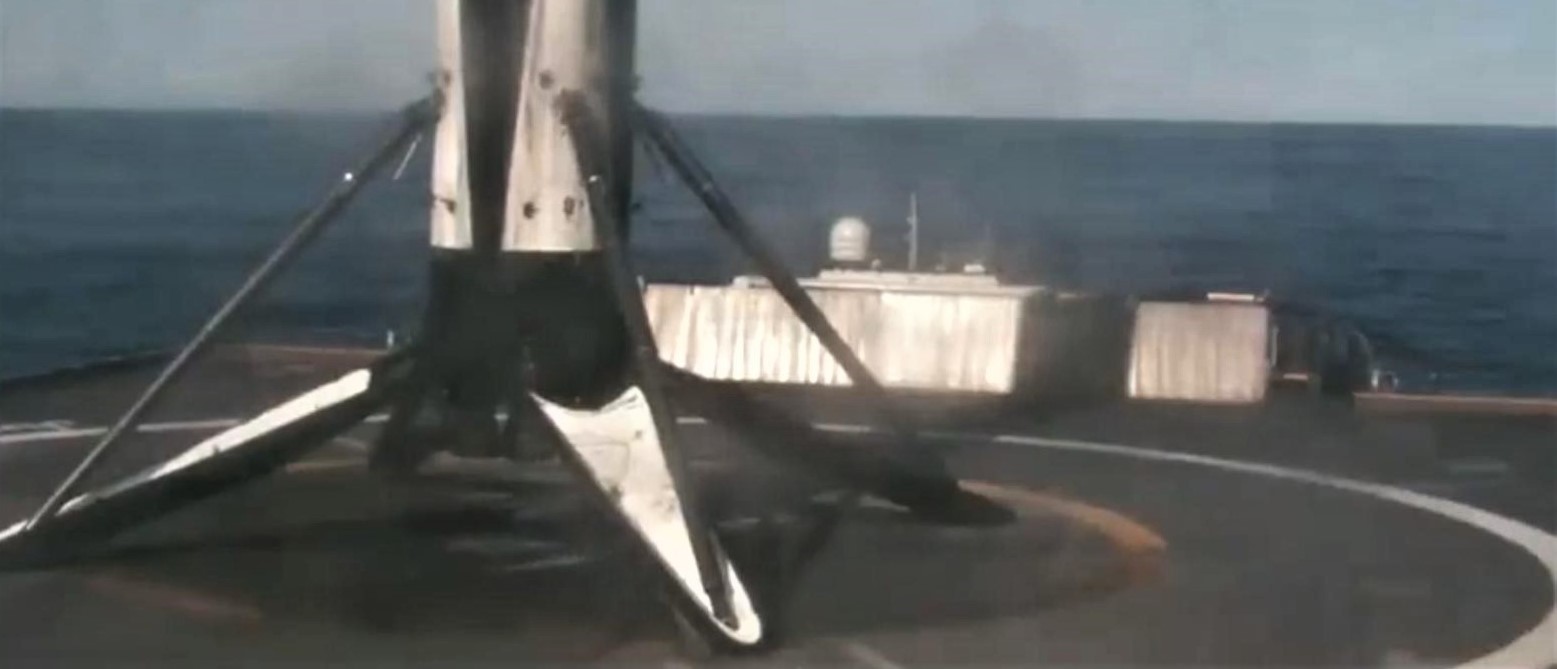
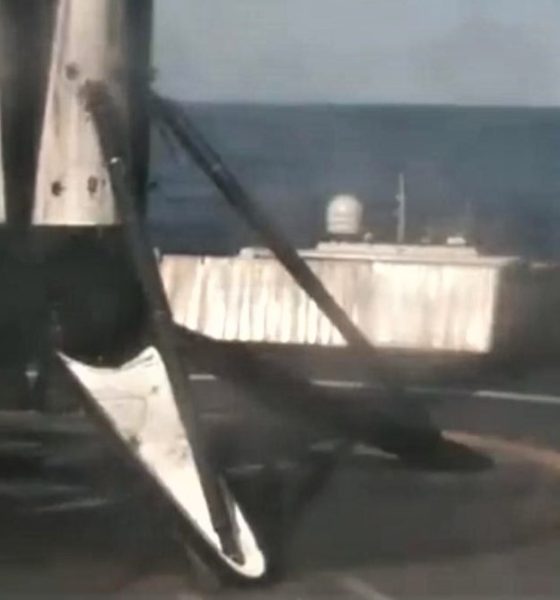
News
SpaceX Falcon 9 Block 5 booster nails third launch and landing in 7 months
Following a bit less than three weeks of relentless launch delays and scrubs, SpaceX has successfully launched and landed a Falcon 9 Block 5 booster for the third time, marking a critical milestone for the company’s long-held aspiration of building and operating rockets that can begin to approach the reliability, reusability, and affordability of modern aircraft.
While SpaceX still has a long way to go before Falcon 9 (or BFR) can hope to touch airliners, this triple launch and landing of a single Falcon 9 booster is the biggest step yet towards that critical goal. Having now completed three launches in an impressively routine fashion, Falcon 9 B1046 may be on a fast track to become the first SpaceX rocket to launch four or more times in the near future.
Falcon 9 first stage has landed on the Just Read the Instructions droneship—completing this rocket booster’s third launch and landing this year. pic.twitter.com/DXqT7KH9sM
— SpaceX (@SpaceX) December 3, 2018
What exactly goes into the process of preparing Falcon 9 Block 5 boosters for reused launches is not entirely clear, but it can be said with some confidence that Block 5 (or SpaceX’s comfort level) is not quite to the point that a booster has flown with literally zero significant refurbishment between launches. It’s possible that the average 3-4 months Block 5 boosters currently spend between launches is filled solely with inspections, nondestructive testing, and perhaps some mild cleaning in certain areas, but it’s certainly not as probable as the need for some mildly to moderately significant repairs or part replacements.
Ultimately, this is a transparent nitpick that ignores the simple reality that SpaceX is already reusing rockets more rapidly and efficiently than any other entity in history, in which NASA’s Space Shuttle is truly the only orbital-class rocket that can lay claim to technically faster launch turnaround times, although Shuttle refurbishment relied on a massive infrastructure that cost a minimum of $5-10M every day. At the absolute least, SpaceX’s inspection and refurbishment of Falcon 9 Block 5 boosters is somewhere between 10 and 20 times cheaper than NASA’s best Shuttle refurbishment.
Four launches and beyond
While SpaceX webcast hosts and company engineers Lauren Lyons and Kate Tice didn’t specifically mention the possibility, it’s very likely that – should post-recovery inspections uncover no major surprises – Falcon 9 B1046’s successful third launch and landing could pave the way for a future of 4, 5, 6, or more launches as 2018 comes to a close and 2019 nears the horizon. As SpaceX’s reusability engineers and technicians begin to gain confidence with how Falcon 9’s Block 5 upgrade behaves after multiple launches and landings, the time needed between flight-proven launches of the same booster should continue to rapidly decrease over the next 6-12 months. According to COO and President Gwynne Shotwell, Block 5 boosters are already outperforming expectations.
Shotwell: Falcon 9 first stages come back in much better shape than anticipated. Have refurbishment time down to four weeks; goal is still a one-day turnaround next year. #WSBW
— Jeff Foust (@jeff_foust) September 11, 2018
Finally, Lyons noted that SpaceX had, in fact, sent Mr. Steven out into the Pacific Ocean for the fairing recovery ship’s first catch attempt in more than four months, and said that the company would provide updates about that attempt later on. Stay tuned to find out how that fairing recovery attempt went!
Mr. Steven is stationed in the Pacific, as SpaceX will attempt to catch and recover the fairing this mission. pic.twitter.com/A7aBSJoFfc
— SpaceX (@SpaceX) December 3, 2018
For prompt updates, on-the-ground perspectives, and unique glimpses of SpaceX’s rocket recovery fleet check out our brand new LaunchPad and LandingZone newsletters!

News
Tesla (TSLA) receives “Buy” rating and $551 PT from Canaccord Genuity
He also maintained a “Buy” rating for TSLA stock over the company’s improving long-term outlook, which is driven by autonomy and robotics.

Canaccord Genuity analyst George Gianarikas raised his Tesla (NASDAQ:TSLA) price target from $482 to $551. He also maintained a “Buy” rating for TSLA stock over the company’s improving long-term outlook, which is driven by autonomy and robotics.
The analyst’s updated note
Gianarikas lowered his 4Q25 delivery estimates but pointed to several positive factors in the Tesla story. He noted that EV adoption in emerging markets is gaining pace, and progress in FSD and the Robotaxi rollout in 2026 represent major upside drivers. Further progress in the Optimus program next year could also add more momentum for the electric vehicle maker.
“Overall, yes, 4Q25 delivery expectations are being revised lower. However, the reset in the US EV market is laying the groundwork for a more durable and attractive long-term demand environment.
“At the same time, EV penetration in emerging markets is accelerating, reinforcing Tesla’s potential multi‑year growth runway beyond the US. Global progress in FSD and the anticipated rollout of a larger robotaxi fleet in 2026 are increasingly important components of the Tesla equity story and could provide sentiment tailwinds,” the analyst wrote.
Tesla’s busy 2026
The upcoming year would be a busy one for Tesla, considering the company’s plans and targets. The autonomous two-seat Cybercab has been confirmed to start production sometime in Q2 2026, as per Elon Musk during the 2025 Annual Shareholder Meeting.
Apart from this, Tesla is also expected to unveil the next-generation Roadster on April 1, 2026. Tesla is also expected to start high-volume production of the Tesla Semi in Nevada next year.
Apart from vehicle launches, Tesla has expressed its intentions to significantly ramp the rollout of FSD to several regions worldwide, such as Europe. Plans are also underway to launch more Robotaxi networks in several more key areas across the United States.
News
Waymo sues Santa Monica over order to halt overnight charging sessions
In its complaint, Waymo argued that its self-driving cars’ operations do not constitute a public nuisance, and compliance with the city’s order would cause the company irreparable harm.

Waymo has filed a lawsuit against the City of Santa Monica in Los Angeles County Superior Court, seeking to block an order that requires the company to cease overnight charging at two facilities.
In its complaint, Waymo argued that its self-driving cars’ operations do not constitute a public nuisance, and compliance with the city’s order would cause the company irreparable harm.
Nuisance claims
As noted in a report from the Los Angeles Times, Waymo’s two charging sites at Euclid Street and Broadway have operated for about a year, supporting the company’s growing fleet with round-the-clock activity. Unfortunately, this has also resulted in residents in the area reportedly being unable to sleep due to incessant beeping from self-driving taxis that are moving in and out of the charging stations around the clock.
Frustrated residents have protested against the Waymos by blocking the vehicles’ paths, placing cones, and “stacking” cars to create backups. This has also resulted in multiple calls to the police.
Last month, the city issued an order to Waymo and its charging partner, Voltera, to cease overnight operations at the charging locations, stating that the self-driving vehicles’ activities at night were a public nuisance. A December 15 meeting yielded no agreement on mitigations like software rerouting. Waymo proposed changes, but the city reportedly insisted that nothing would satisfy the irate residents.
“We are disappointed that the City has chosen an adversarial path over a collaborative one. The City’s position has been to insist that no actions taken or proposed by Waymo would satisfy the complaining neighbors and therefore must be deemed insufficient,” a Waymo spokesperson stated.
Waymo pushes back
In its legal complaint, Waymo stated that its “activities at the Broadway Facilities do not constitute a public nuisance.” The company also noted that it “faces imminent and irreparable harm to its operations, employees, and customers” from the city’s order. The suit also stated that the city was fully aware that the Voltera charging sites would be operating around the clock to support Waymo’s self-driving taxis.
The company highlighted over one million trips in Santa Monica since launch, with more than 50,000 rides starting or ending there in November alone. Waymo also criticized the city for adopting a contentious strategy against businesses.
“The City of Santa Monica’s recent actions are inconsistent with its stated goal of attracting investment. At a time when the City faces a serious fiscal crisis, officials are choosing to obstruct properly permitted investment rather than fostering a ‘ready for business’ environment,” Waymo stated.
News
Tesla FSD v14.2.2 is getting rave reviews from drivers
So far, early testers have reported buttery-smooth drives with confident performance, even at night or on twisty roads.

Tesla Full Self-Driving (Supervised) v14.2.2 is receiving positive reviews from owners, with several drivers praising the build’s lack of hesitation during lane changes and its smoother decision-making, among others.
The update, which started rolling out on Monday, also adds features like dynamic arrival pin adjustment. So far, early testers have reported buttery-smooth drives with confident performance, even at night or on twisty roads.
Owners highlight major improvements
Longtime Tesla owner and FSD user @BLKMDL3 shared a detailed 10-hour impression of FSD v14.2.2, noting that the system exhibited “zero lane change hesitation” and “extremely refined” lane choices. He praised Mad Max mode’s performance, stellar parking in locations including ticket dispensers, and impressive canyon runs even in dark conditions.
Fellow FSD user Dan Burkland reported an hour of FSD v14.2.2’s nighttime driving with “zero hesitations” and “buttery smooth” confidence reminiscent of Robotaxi rides in areas such as Austin, Texas. Veteran FSD user Whole Mars Catalog also demonstrated voice navigation via Grok, while Tesla owner Devin Olsen completed a nearly two-hour drive with FSD v14.2.2 in heavy traffic and rain with strong performance.
Closer to unsupervised
FSD has been receiving rave reviews, even from Tesla’s competitors. Xpeng CEO He Xiaopeng, for one, offered fresh praise for FSD v14.2 after visiting Silicon Valley. Following extended test drives of Tesla vehicles running the latest FSD software, He stated that the system has made major strides, reinforcing his view that Tesla’s approach to autonomy is indeed the proper path towards autonomy.
According to He, Tesla’s FSD has evolved from a smooth Level 2 advanced driver assistance system into what he described as a “near-Level 4” experience in terms of capabilities. While acknowledging that areas of improvement are still present, the Xpeng CEO stated that FSD’s current iteration significantly surpasses last year’s capabilities. He also reiterated his belief that Tesla’s strategy of using the same autonomous software and hardware architecture across private vehicles and robotaxis is the right long-term approach, as it would allow users to bypass intermediate autonomy stages and move closer to Level 4 functionality.
